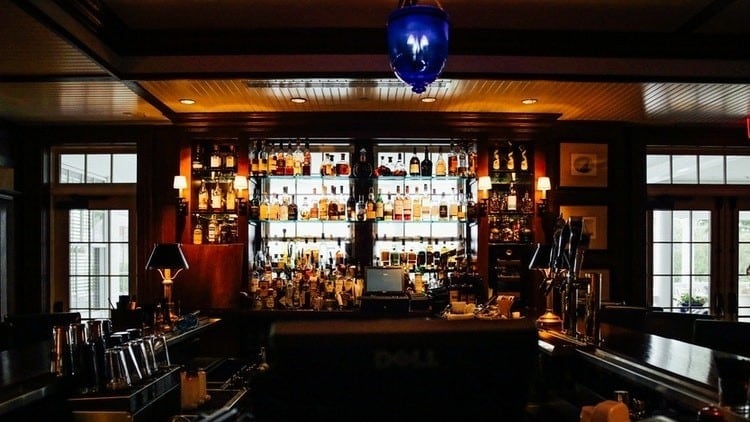Prime Minister Boris Johnson announced yesterday (Tuesday 23 June) pubs and restaurants can reopen next month, with Covid-secure measures.
The 43-page guidance document, Keeping workers and customers safe during Covid-19 in restaurants, pubs, bars and takeaways services, has been prepared by the Department of Business, Energy and Industrial Strategy (BEIS) with input from businesses, unions, industry bodies and the devolved administrations, and in consultation with Public Health England and the Health and Safety Executive. It is expected to be updated over time.
The Morning Advertiser (MA) takes a look at all the steps operator should take to ensure guests and workers are kept safe.
Guidance
Visual signage should be visible throughout the pub, advising customers and staff on social distancing and hygiene, encouraging hand sanitising or hand washing. This can also be communicated via email or phone.
Operators should note they need to explain to customers that failures to observe safety measures will result in service not being provided.
Social distance
Maintaining social distancing (2m, or 1m with risk mitigation where 2m is not viable, is acceptable) from customers when taking orders from customers.
Risk mitigation includes increasing the frequency of hand washing and surface cleaning; keeping non-socially distanced activity time as short as possible; using screens or barriers to separate workers both from each other and customers; using back-to-back or side-to-side working - rather than face-to-face - whenever possible; and reducing the number of people each person has contact with by using fixed teams.
Working together
Operators should consider the cumulative impact of many venues reopening in a small area, which means working with local authorities, neighbouring businesses and travel operators to assess this risk and applying additional mitigations.
Pubs should collaborate with other businesses in the area and the council to take the impact of processes including queues on public spaces such as high streets and public car parks into account.
This could also mean providing additional parking or facilities such as bike racks where possible, in a bid to help customers avoid using public transport.
For instances where queuing could occur, this should be managed to ensure there is not a risk to individuals, other businesses or additional security risks.
Working with other businesses should also be taken into account to consider how to spread the number of people arriving throughout the day, which could be done by staggering opening hours to aid reducing demand on public transport at key times and overcrowding.
Rearranging furniture and monitoring customers
Staff directing customers and protecting them from traffic by routing them behind physical structures could be something to take note of.
Pubs should also look at reconfiguring furniture to maintain distancing guidelines, working with neighbouring businesses and local authorities, safe queuing spaces and clear signage on hygiene.
The number of customers at the pub should be managed, as well as the entry of guests, so all indoor customers are seating with appropriate distancing and those outside have appropriately spaced seating or standing room.
This will help areas of congestion do not become overcrowded. Marking entry numbers could be done at time of booking through reservation systems, social distancing markers, customers queuing at a safe distance for toilets or bringing payment machines to customers where possible.
The guidelines also state operators should make customers aware of gathering limits, take the needs of disabled customers into account and ensure precautions are taken in the event of adverse weather conditions.
Children
One-way systems should be considered and families with children should be reminded they are responsible for supervising them at all times and should follow social distancing guidelines.
When it comes to children’s play areas, indoor and soft play areas need to be kept closed and outdoor playgrounds should be managed safely.
Maintenance visits
Businesses should determine if schedules for essential services and contractor visits can be revised to help reduce interaction and overlap between people such as carrying out services at night.
Serving customers
Operators should minimise customer self service of food, cutlery and condiments to help reduce the risk of transmission. Cutlery and condiments could be provided only when food is served and providing just disposable condiments or cleaning non-disposable containers after each use is advised.
The guidelines suggests asking customer to remain at the table where possible or asking them not to lean on counters when collecting takeaways to help reduce the number of surfaces touched by staff and guests.
Contactless payments should be encouraged and the location of card readers should e adjusted to social distancing guidelines.
Using screens or tables at tills and counters should be fitted to minimise contact between front-of-house workers and customers at points of service.
When it comes to outdoor areas, with specific attention to covered areas, these areas should have sufficient ventilation, which could be achieved by increasing the open sides of a covered area.
Table service
Ordering through an app should be encouraged but if this is not possible, service needs to be adjusted to minimise staff contact with customers.
Indoor table service must be used where possible, alongside further measures such as assigning a single staff member per table.
Outdoor table service should also be encouraged although customers are permitted to stand outside if distanced appropriately.
Where bar or counter service is unavoidable, customers should be prevented from remaining at the bar or counter after ordering.
Customers congregating at point of service should be avoided and one measure to combat this is having only staff collect and return empty glasses.
Having zones where front-of-house staff can collect food from can help minimise contact between kitchen staff and waiting staff.
Use of outdoor areas for service where possible should be encouraged and operator should consider increasing outdoor seating or outdoor points of service for this.
Delivery
Customers should be encouraged to order online, on apps or over the phone to reduce queues and stagger pick-up times.
Operators should minimise contact between kitchen workers and front-of-house workers, delivery drivers or riders, which could be achieved by having zones where delivery drivers can collect packaged food items.
There should be limited access to pubs for people waiting for or collecting takeaways with clear markings for social distancing for delivery drivers, riders or customers queuing. Operators could also ask customers to wait outside or in their cars.
Pubs should also work with their local authority, landlord and neighbours to ensure designated waiting areas do not obstruct public spaces.
Toilets
Signs and posters to build awareness of good handwashing technique and hygiene rules should be displayed.
Safety precautions such as signage should be considered as well as social distance markings where queues usually form, alongside a limited-entry approach.
Ventilation should also be considered and more waste facilities and more frequent rubbish collection.
Running water, liquid soap and suitable options for drying (either paper towels or hand driers) are available.
Toilets should be cleaned using normal products and use of disposable cloths or paper rolls to clean all hard surfaces.
A visible cleaning schedule should be kept up to date and visible alongside special care taken for cleaning of portable toilets and larger toilet blocks.




